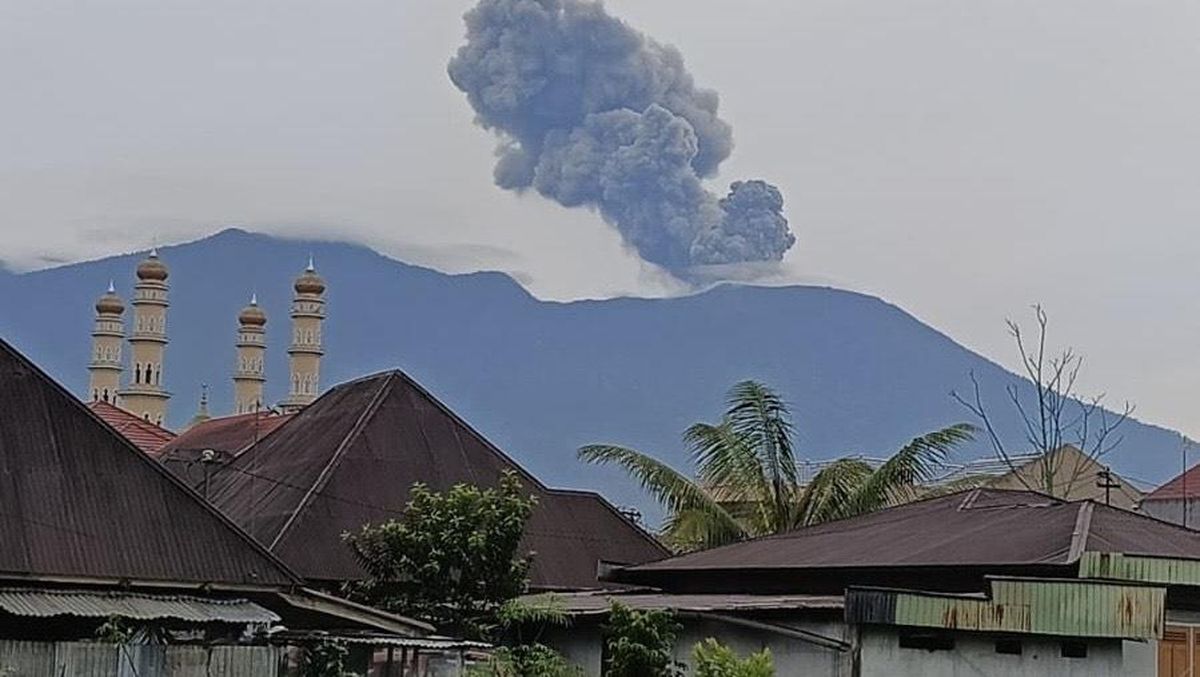January 2, 2025 | 08:31 pm

TEMPO.CO, Jakarta - Many people celebrate the arrival of the new year with colorful fireworks in the air, expressing their hope for good luck. Astrophiles, on the other hand, are ready to embrace 2025 with a series of astronomical events.
This January witnesses a number of celestial phenomena, with the Quadrantid meteor shower kicking off the year. The phenomenon often occurs during early January every year—and is named one of the best!
The Quadrantids are expected to peak this Friday, but where should we go to see this phenomenal meteor stream? Scroll down to read more information.
A Brief Introduction to the Quadrantids
The Quadrantid meteor shower is a fairly common sky phenomenon at the beginning of the year. Although scientists are still skeptical about its parent object, one thing for sure is that the peak of this meteor shower usually occurs in early January, as NASA stated.
On average, the Quadrantids deliver about 20 to 30 meteors per hour within a velocity of approximately 25.5 miles per second. However, the amount doubles during its peak, from 60 to as many as 200 meteors.
Regardless of its potentially high quantity, the skyward spectacle only lasts for a few hours—six hours, according to Smithsonian Magazine. NASA revealed that the short duration is largely due to the shower's thin stream of particles and how Earth crosses the stream at a perpendicular angle.
Furthermore, aside from being one of the best annual meteor showers, the Quadrantids are also renowned for their bright fireball meteors. The latter are distinctive for their larger light explosions and color.
Best Time to See the Quadrantid Meteor Shower
Now that we are done with the introduction, let’s get to the crucial part: when will the Quadrantid meteor shower be visible?
According to the American Meteor Society, this astronomical phenomenon is active from December 26, 2024, to January 16, 2025. But the best time to see the Quadrantid meteor shower is during its peak.
The Quadrantid meteor shower is predicted to peak on January 2-3, 2025. To be precise, observe the stream from the late evening of January 2 until the early morning hours of the next day, says Smithsonian Magazine.
- Active Duration: December 26, 2024 to January 16, 2025
- Peak Date: January 3, 2025 (19:00 UTC; 02:00 p.m. EST)
Best Place to See the Quadrantid Meteor Shower
According to NASA and the American Meteor Society, the Northern Hemisphere and the Pacific region are the best places to catch the Quadrantid meteor shower. However, the dazzling meteor show is still observable at latitudes north of 51 degrees south, says NASA.
How to See the Quadrantid Meteor Shower
The American Meteor Society reported that the Moon will be 11 percent full during the peak of the Quadrantids, meaning that the shower will be obstructed by the Moon’s light.
For a better viewing experience, you can follow several tips below to catch the Quadrantid meteor shower, as shared by NASA and Smithsonian Magazine:
- Find an area with little to no light pollution, far from any distractions of city and street lights. You can also go to a dark place with an obstructed point of view, like rooftops.
- Lie flat on your back with your feet facing northeast and look up.
- Wear warm clothes and bring a pillow and a blanket, a sleeping bag, or a lawn chair that will provide comfort while observing the meteor stream.
- Avoid looking at any artificial lights, including your smartphones or other electronic devices, for 20 to 30 minutes in order for your eyes to fully adapt to the darkness.
Other Astronomical Events to Expect in January 2025
The Quadrantid meteor shower is indeed the highlight of the beginning of this year’s January. But, there are other celestial phenomena awaiting you until the end of the month.
Here are other astronomical events you can expect in January 2025, as cited by Travel + Leisure:
- January 4: Saturn and the Moon appear in one binocular field of view.
- January 10: Venus is at its easternmost distance from the Sun, which is among the best times to observe the hot planet.
- January 13: January’s Wolf Moon reaches its peak illumination at 05:27 p.m. EST.
- January 15-16: Mars reaches opposition, making it appear brighter and more viewable.
- January 21: A planet parade, comprising Venus, Jupiter, Mars, Neptune, Saturn, and Uranus, is visible from sunset until 9 p.m.
Editor’s Choice: Happening in the Sky This Month: Planetary Conjunction, Solstice, and 120 Meteors Per Hour Rainout
Click here to get the latest news updates from Tempo on Google News
Happening in the Sky This Month: Planetary Conjunction, Solstice, and 120 Meteors Per Hour Rainout
28 hari lalu

Several astronomical phenomena will color the sky throughout December 2024. One of the spectacular events is the Geminid meteor shower.
Without Astronauts, Boeing's Starliner Returns to Earth
7 September 2024

Boeing's Starliner spacecraft landed uncrewed in a New Mexico desert late on Friday capping a three-month test mission hobbled by technical issues.
U.S. Government Funding Yielded Hundreds of Patents for China-based Researchers
30 Agustus 2024

The U.S. Defense Department, NASA, and other government agencies funded research that led to more than 1,000 U.S. patents for China-based inventors.
Blue Moon on August 19, 2024: All You Need to Know
19 Agustus 2024

A Blue Moon will occur on August 19, 2024. Will the moon change its color into blue? Let's find out more about the upcoming Blue Moon here.
SpaceX, NASA to Launch Crew-9 Mission Next Month
27 Juli 2024

SpaceX and NASA said on Friday they plan to launch the space agency's Crew-9 mission to the International Space Station (ISS) no earlier than Aug. 18
SpaceX's Starship Survives Return to Earth, Aces Landing Test on Fourth Try
7 Juni 2024

SpaceX's Starship rocket survived a fiery, hypersonic return from space and achieved a breakthrough landing demonstration in the Indian Ocean.
Boeing Starliner Capsule's First Crewed Test Flight Postponed over Atlas Rocket Glitch
7 Mei 2024

The long-awaited first crewed test flight of Boeing's (BA.N) Starliner spacecraft will be no earlier than Friday, NASA says.
China Launches Historic Mission to Retrieve Samples from Far Side of the Moon
4 Mei 2024

China on Friday, May 3, launched an uncrewed spacecraft on a nearly two-month mission to retrieve rocks and soil from the far side of the moon.
Boeing Sending First Astronaut Crew to Space after Years of Delay
3 Mei 2024

Boeing is poised to send the first Starliner space capsule with a crew of humans into orbit next week.
Rare Celestial Events in April 2024; From Meteor Showers to Devil Comet
2 April 2024

Several rare astronomical events will occur in April 2024, including meteor showers and solar eclipse.

 3 months ago
139
3 months ago
139










































